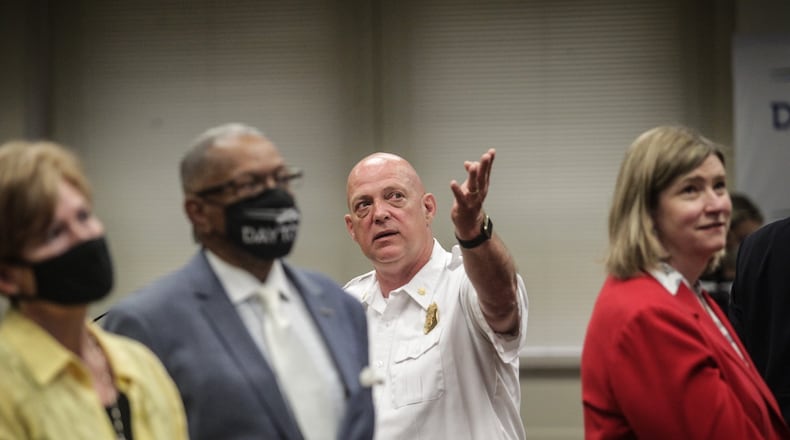A new portal and dashboard makes it easier to find out information and stats about use-of-force incidents, officer-involved shootings, and arrest and crime trends.
“Today we are marking a year of this work and rolling out new transparency tools that will help the public and the media keep track of reform implementation and broader trends in police activity,” Dayton Mayor Nan Whaley said.
Whaley and other city officials said some reform recommendations will significantly change policing and public safety in the city.
But some people involved in the reform process are skeptical about how much and how quickly policing will change as a result of their work and recommendations, according to a report the city also released Monday.
Floyd’s death one year ago sparked racial justice and police brutality protests across the nation, including in Dayton.
In response to the demonstrations, the mayor created five police reform working groups consisting of more than 125 community members with diverse backgrounds and experiences.
Reform group members studied and discussed police department policies and practices, and ultimately approved 142 recommendations for reforms.
An online tool called the police reform implementation tracker recently launched that has information about each recommendation, including the status and some details about what has been done to carry out the proposals.
A new online transparency portal has links to resources like police policies, programs and some past reports.
The portal also has interactive dashboards with statistics and information about use-of-force incidents and officer-involved shootings.
The data can be filtered to show what kinds of force were used, and the reasons and justifications police gave for the actions.
Visitors also can find out details about use-of-force incidents based on the age, race and sex of the community members involved.
The city will be transparent and share information and updates with the public as it works to implement the reform proposals, Dayton City Manager Shelley Dickstein said.
City and police leadership spent nearly 10 months hearing from community members about how they want to be policed, and the recommendations reflect those difficult but honest talks, city leaders said.
Some recommendations likely will lead to big shifts in policing, like a proposal for an alternative response model for some types of nonviolent calls, Whaley said.
Other major changes could come from recommendations for a more comprehensive system of police oversight, a stronger focus on police recruit diversity, de-escalation policies, and new prohibitions and reporting requirements for use of force, she said.
“This process was not perfect,” Whaley said. “But I feel confident the outcomes were driven by the community.”
Some reform group members said the work was an important step to improving the police department’s relationship with the Black community, according to a new independent report contracted by the city.
Some reform committee members fear the most significant recommendations will be rejected, “left to wither” or will not be put into practice, according to the report, which was based on interviews with 14 committee members and the head of the Dayton police union.
Mike Deffet, an assistant Montgomery County public defender and a member of the oversight reform group, said in the report he doesn’t know if there will be the political will to implement the recommendations and there could be some financial issues.
Many participants believe the recommendations will lead to improved data collection, transparency, independent oversight, training and recruitment of diverse police candidates, according to the report.
Committee members said they hope this will result in a more more racially and culturally sensitive police culture.
“This process was real,” said Cornell Trammell, a community activist, local entrepreneur and member of the recruitment and promotion working group. “This wasn’t just something put together to appease people.”
About the Author




